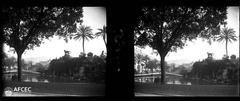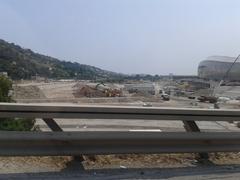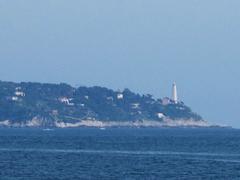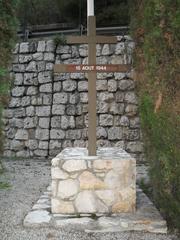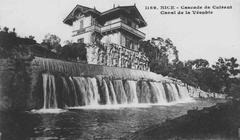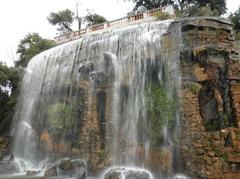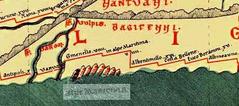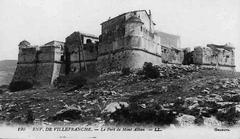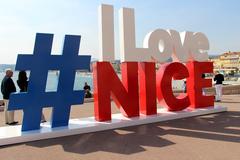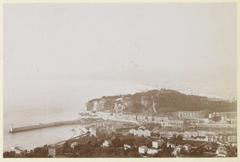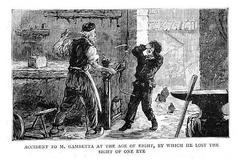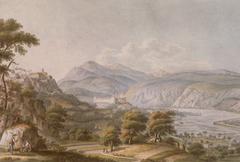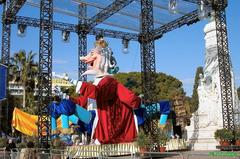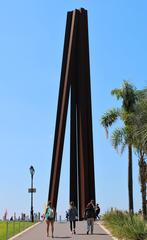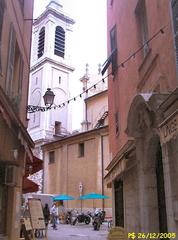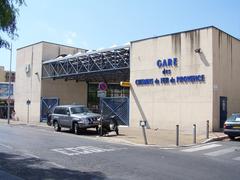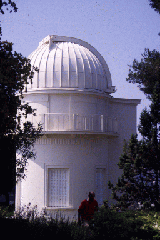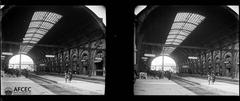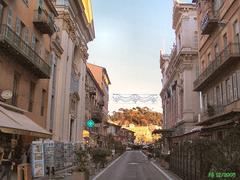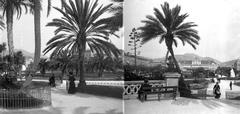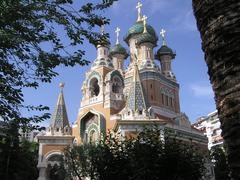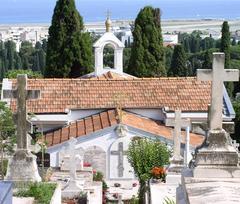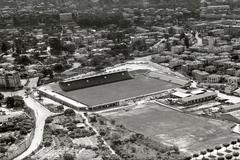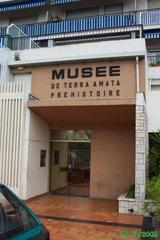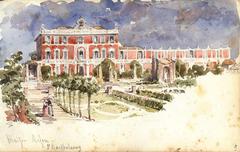
Nice Visiting Guide: Historical Sites, Visiting Hours, Tickets, and City Highlights
Date: 04/07/2025
Introduction
Nestled along the Mediterranean and framed by the Alps, Nice is the quintessential Winter Resort Town of the Riviera. With roots dating to the 4th century BCE and a legacy shaped by Greek, Roman, and later European influences, Nice boasts a unique cultural mosaic (mad-traveller.com). Its mild climate first attracted British aristocracy in the 18th century, resulting in grand promenades, luxury hotels like Hôtel Negresco, and a cosmopolitan blend of Mediterranean, British, Russian, and other architectural styles (provence-alpes-cotedazur.com; cotedazurfrance.com).
Recognized by UNESCO in 2021 for its universal value as a pioneering winter tourism destination, Nice invites visitors to explore its architectural landmarks, vibrant Old Town, villa districts, and cultural treasures including the Musée Matisse and Musée Marc Chagall (UNESCO; worldheritagesite.org). This guide offers detailed information on visiting hours, ticketing, accessibility, and practical tips to help you experience the city’s storied past and vibrant present.
Table of Contents
- Ancient and Early History
- The Rise of Nice as a Winter Resort
- UNESCO World Heritage Inscription
- Architectural and Urban Heritage
- Cultural Significance and Artistic Legacy
- The UNESCO Visitor Experience
- Iconic Landmarks and Architectural Highlights
- Museums and Cultural Institutions
- Natural Attractions and Outdoor Activities
- Seasonal Highlights
- Unique Experiences and Hidden Gems
- Practical Visitor Tips
- Castle Hill (Colline du Château) In-Depth
- FAQ
- Conclusion and Recommendations
- References
Ancient and Early History
Founded in the 4th century BCE by Greek settlers from Massalia (now Marseille), Nice—named Nikaia after the goddess Nike—quickly became a prized settlement due to its strategic location. The Romans later built roads, baths, and an amphitheater, traces of which remain in Cimiez (mad-traveller.com). Over centuries, the city was ruled by Byzantines, Saracens, Genoese, and the House of Savoy, each leaving distinctive marks on its urban and cultural fabric.
The Rise of Nice as a Winter Resort
The transformation of Nice into a premier winter resort began in the 18th century as British aristocrats sought refuge from northern winters. Their presence spurred the creation of luxury hotels, promenades, and gardens, and by the late 19th century, Nice had become a cosmopolitan hub for Russian, Italian, and other European elites (provence-alpes-cotedazur.com). The iconic Promenade des Anglais, built in 1844, epitomizes this era, flanked by Belle Époque masterpieces like Hôtel Negresco and Excelsior Regina Palace (cotedazurfrance.com).
UNESCO World Heritage Inscription
Overview
In 2021, Nice was designated a UNESCO World Heritage Site as the “Winter Resort Town of the Riviera” (UNESCO), recognizing its role as a pioneering destination in the history of winter tourism and cosmopolitan urban design. The protected area covers 522 hectares, including the seafront, Old Town, hills, and villa districts (explorenicecotedazur.com).
Criteria for Inscription
- Criterion (ii): Showcases interchange of human values through architecture and urban planning, blending Mediterranean, British, Russian, and other influences.
- Criterion (iv): A prime example of a city shaped by winter tourism, with a distinctive urban layout and public spaces.
- Criterion (vi): Associated with major artistic and literary works, inspiring creators like Matisse, Chagall, Dufy, and Smollett (worldheritagesite.org).
Architectural and Urban Heritage
Belle Époque and Art Deco Landmarks
The Belle Époque era (late 19th–early 20th centuries) transformed Nice’s cityscape. The palm-lined Promenade des Anglais remains the city’s signature, flanked by:
- Hôtel Negresco: A national monument famous for its pink dome and art collection. Public areas open 9:00 AM–7:00 PM; exhibitions may require tickets (Hotel Negresco website).
- Excelsior Regina Palace: Formerly Queen Victoria’s residence, exemplifying Belle Époque grandeur; exterior and gardens viewable.
- Villa Furtado-Heine: Early neoclassical villa in the UNESCO area, accessible via guided tours booked with local agencies.
Old Town (Vieille Ville) and Baroque Heritage
Vieux Nice is a maze of narrow alleys and pastel buildings. Highlights include:
- Basilica Notre-Dame de l’Assomption: Baroque church open daily 9:00 AM–6:00 PM, free entry.
- Eglise Jaune (Yellow Church): A vivid example of Baroque religious architecture.
Villas and Gardens
The hills and seafront are dotted with villas from the late 19th and early 20th centuries, such as Villa Marichu in Cap de Nice, often surrounded by lush gardens (cotedazurfrance.com).
Cultural Significance and Artistic Legacy
Nice’s cosmopolitan atmosphere attracted artists and writers, including Henri Matisse and Marc Chagall, whose works are showcased at the city’s dedicated museums (worldheritagesite.org). The Nice Carnival, opera, and theater scene have long enriched its cultural reputation.
- Musée Matisse: Open Tue–Sun, 10:00 AM–6:00 PM; tickets ~€10 (Musée Matisse).
- Musée Chagall: Open Tue–Sun, 10:00 AM–6:00 PM; tickets ~€8 (Musée Chagall).
- Both museums are wheelchair accessible.
The UNESCO Visitor Experience
Exploring the UNESCO-Listed Area
The UNESCO perimeter is marked with ground studs and plaques at 10 locations, highlighting key historical and architectural sites (explorenicecotedazur.com). Key sites include the Promenade des Anglais, Old Town, Colline du Château, villa districts, and grand hotels.
Guided tours and digital apps provide immersive experiences; guided tour tickets usually cost €15–30.
Practical Tips for Visitors
- Visiting Hours: Most museums and sites open 9:00 AM–6:00 PM (check for seasonal changes).
- Tickets: Can be purchased online, at attraction entrances, or through the Nice Tourist Office.
- Accessibility: Most sites and museums are accessible; contact venues for details.
- Getting Around: Walkable city center; trams and buses connect major sites. Parking is limited in peak seasons.
- Events: The Nice Carnival (February) features parades and festivities (throughatravellens.com).
Iconic Landmarks and Architectural Highlights
Promenade des Anglais
The Promenade des Anglais is Nice’s iconic 7km seafront, ideal for walks, cycling, and sea views. Open 24/7, it is lined with grand hotels including Hotel Negresco.
Vieux Nice (Old Town)
A lively maze of alleys, Vieux Nice is home to the Opéra de Nice, Cathédrale Sainte-Réparate (open daily 9:00 AM–6:00 PM), and the Cours Saleya Market.
Cours Saleya Market
Open daily 6:00 AM–5:00 PM except Mondays (antiques market until 6:00 PM), Cours Saleya is a feast of flowers, produce, and Niçoise specialties (niceandbeyond.com).
Castle Hill (Colline du Château)
This park offers panoramic vistas of the city and coast, open daily 8:00 AM to sunset, free entry (UNESCO World Heritage). Access via stairs or a free elevator.
Place Masséna
The main city square, open 24/7, connects Old Town with shopping streets and the Promenade du Paillon (goaskalocal.com).
Palaces and Belle Époque Heritage
Admire the Château de l’Anglais (exterior), Château de Valrose (limited access), and other grand apartment buildings.
Museums and Cultural Institutions
- Musée Matisse: Tue–Sun, 10:00 AM–6:00 PM, ~€10.
- Musée Marc Chagall: Tue–Sun, 10:00 AM–6:00 PM, ~€7.
- Archaeological Crypt: Daily 10:00 AM–6:00 PM, ~€5.
Natural Attractions and Outdoor Activities
- Beaches: Pebble beaches along the Baie des Anges, free and open year-round. Private clubs offer extra services (royalcaribbean.com).
- Coastal Walks: The Sentier du Littoral offers scenic routes to Villefranche-sur-Mer.
- Parks and Gardens: Promenade du Paillon and Cimiez gardens are open daily and free.
Seasonal Highlights
- Winter: Enjoy mild temperatures, the Nice Carnival, and open museums.
- Spring: Blooming gardens and pleasant weather (royalcaribbean.com).
- Summer: Peak season for festivals like the Nice Jazz Festival.
- Autumn: Warm seas and tranquility (royalcaribbean.com).
Unique Experiences and Hidden Gems
- Nightlife & Rooftop Bars: From chic rooftops to cozy Old Town bars (niceandbeyond.com).
- Boat Tours: Explore the Riviera by sea (niceandbeyond.com).
- Local Cuisine: Try salade niçoise, socca, and join food tours (niceandbeyond.com).
- Day Trips: Visit Eze, Monaco, or Saint-Paul-de-Vence via public transport (francetravelblog.com).
Practical Visitor Tips
- Best Times: Spring and autumn for mild weather and fewer crowds (niceandbeyond.com).
- Getting Around: Walk, tram, bus, or train (francetravelblog.com).
- Accommodation: Choose from historic hotels to modern rentals (niceandbeyond.com).
- Language: French is official; English spoken in tourist areas.
- Etiquette: Greet shopkeepers, enjoy the relaxed pace.
Castle Hill (Colline du Château) In-Depth
History and Significance
Castle Hill’s medieval fortress was destroyed in 1706, but the site remains a symbol of Nice’s resilience and offers historical ruins, cannons, and a waterfall.
Visiting Information
- Hours: Daily 8:00 AM to sunset (seasonal variation), free entry.
- Access: Stairs from Old Town, free elevator (Quai des États-Unis), limited parking.
- Tours: Guided historic and photography tours available.
- Photographic Spots: Panoramic terraces, waterfall, and city views.
- Tips: Early morning/late afternoon visits recommended; elevator for accessibility; restrooms at base/entrance.
(Official Nice Tourism - Castle Hill)
Frequently Asked Questions (FAQ)
Q: What are the visiting hours for Nice’s main attractions?
A: Most museums operate 10:00 AM–6:00 PM (closed Mondays); outdoor sites like the Promenade and Place Masséna are open 24/7.
Q: Where can I buy tickets?
A: Online via official sites, attraction ticket offices, or the Nice Tourist Office.
Q: Is Nice accessible for travelers with disabilities?
A: Most sites and public spaces are accessible; inquire at specific venues for detailed information.
Q: What is the best time to visit for fewer crowds?
A: Spring (April–May) and autumn (September–October).
Q: Can I visit beaches and parks for free?
A: Public beaches and parks are free; some private clubs and attractions charge fees.
Visual Suggestions
Include images of:
- Promenade des Anglais at sunset (alt=“Promenade des Anglais Nice visiting hours and scenic views”)
- Vieux Nice and Cours Saleya Market (alt=“Nice historical sites and markets visiting hours”)
- Castle Hill panoramic views (alt=“Castle Hill panoramic views Nice tickets and visiting hours”)
- Musée Matisse and Musée Marc Chagall (alt=“Nice museums tickets and visiting hours”)
- Beaches and coastal walks (alt=“Nice beaches accessibility and visiting hours”)
Internal Links
Explore more with our guides on Best Restaurants in Nice, Cultural Events in Nice, and Day Trips from Nice.
Conclusion and Recommendations
Nice’s rich heritage, stunning architecture, and lively culture make it a top destination year-round. Plan ahead by checking visiting hours and ticket availability, and take advantage of guided tours and public transport. Download the Audiala app for personalized travel advice, and follow us on social media for the latest tips and inspiration. Begin your journey and discover why Nice remains a crown jewel of the French Riviera!

